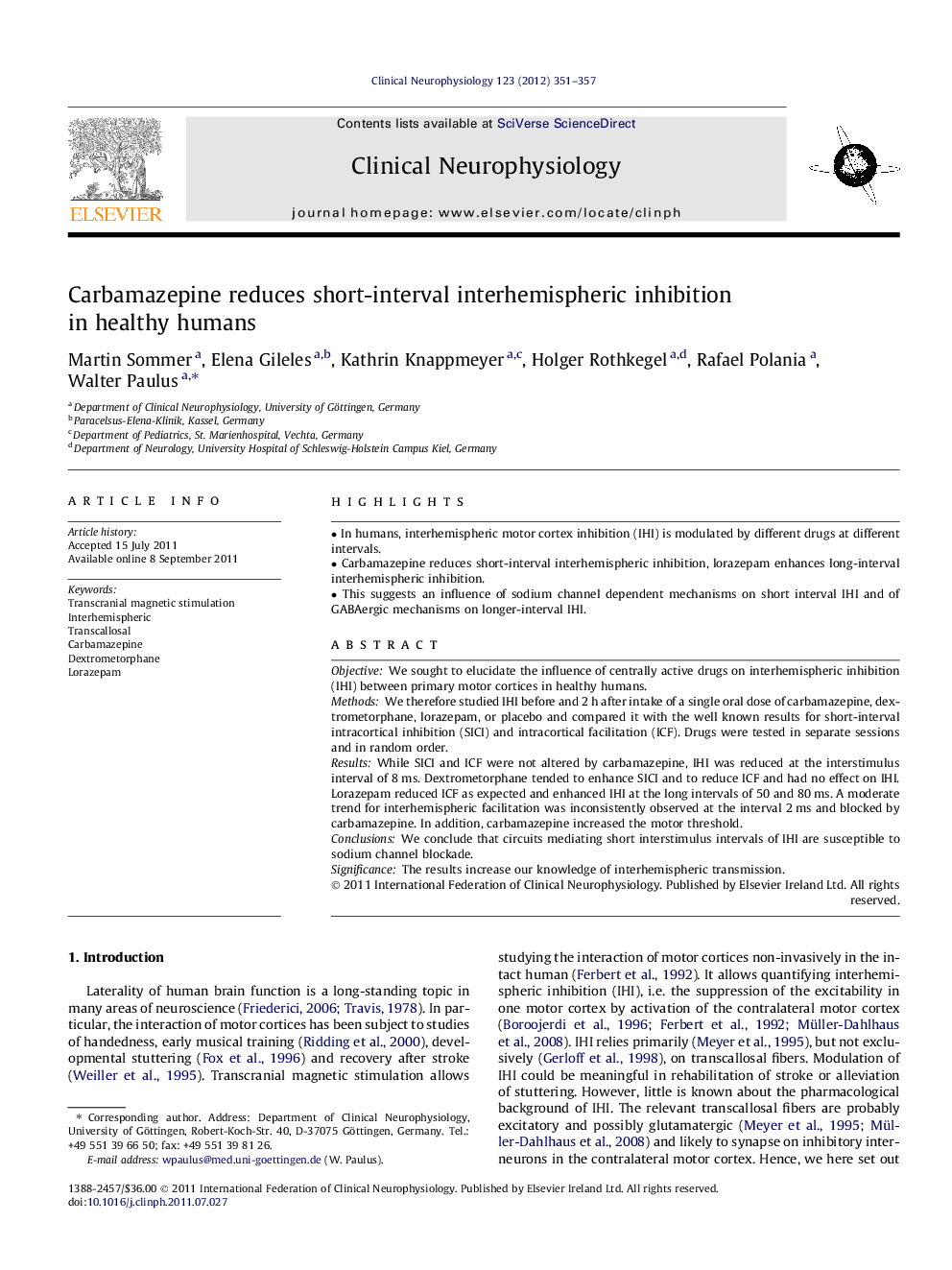| Article ID | Journal | Published Year | Pages | File Type |
|---|---|---|---|---|
| 3045634 | Clinical Neurophysiology | 2012 | 7 Pages |
ObjectiveWe sought to elucidate the influence of centrally active drugs on interhemispheric inhibition (IHI) between primary motor cortices in healthy humans.MethodsWe therefore studied IHI before and 2 h after intake of a single oral dose of carbamazepine, dextrometorphane, lorazepam, or placebo and compared it with the well known results for short-interval intracortical inhibition (SICI) and intracortical facilitation (ICF). Drugs were tested in separate sessions and in random order.ResultsWhile SICI and ICF were not altered by carbamazepine, IHI was reduced at the interstimulus interval of 8 ms. Dextrometorphane tended to enhance SICI and to reduce ICF and had no effect on IHI. Lorazepam reduced ICF as expected and enhanced IHI at the long intervals of 50 and 80 ms. A moderate trend for interhemispheric facilitation was inconsistently observed at the interval 2 ms and blocked by carbamazepine. In addition, carbamazepine increased the motor threshold.ConclusionsWe conclude that circuits mediating short interstimulus intervals of IHI are susceptible to sodium channel blockade.SignificanceThe results increase our knowledge of interhemispheric transmission.
► In humans, interhemispheric motor cortex inhibition (IHI) is modulated by different drugs at different intervals. ► Carbamazepine reduces short-interval interhemispheric inhibition, lorazepam enhances long-interval interhemispheric inhibition. ► This suggests an influence of sodium channel dependent mechanisms on short interval IHI and of GABAergic mechanisms on longer-interval IHI.
